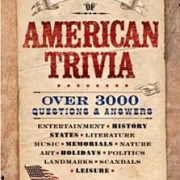Putting Price Into Perspective
Boy, those Harvard Business Review guys sure know how to put things into perspective… I learned that minimum wage employees in Venezuela would need to work 7,063 hours (in other words, more than three years) to buy an iPhone 13. (Here in good ole’ USA, you’d need to work a mere 114 hours to afford that phone.). Customers in every industry are price-sensitive, but, as Allstate found when it comes to auto insurance, it’s simply not true that most will buy the least expensive plan they can find. Price for the value you create, advises Dave Gray, author of Gamestorming: a Playbook for Innovators, Rulebreakers, and Changemakers. In fact, the Corporate Finance Institute defines value-based pricing as adjusting the price based on perceived value rather than historical price.
At Say It For You, we perceive our primary task as blog content writers to be this – clearly demonstrating the value delivered by a business or practice to its customers and clients. By doing that, we have the power to put the price of those goods and services into perspective.
Karen Greenstreet, writing in Forbes in 2014, offered reasons you should – and reasons you shouldn’t – put pricing on your website or in your blog. You want the chance to establish rapport before discussing pricing, she acknowledges, but many customers will not do business with a company that is not forthcoming about pricing and fees.
My own take as a blog writer and trainer is that the very purpose of blogs is to put information into perspective for visitors. The typical website explains what products and services the company offers, who the “players” are and in what geographical area they operate; the better ones give visitors at least a taste of the corporate culture and some of the owners’ core beliefs. It’s left to the continuously renewed business blog writing, though, to “flesh out” the intangibles, those things that make a company stand out from its peers.
For every fact about the company or about one of its products or services, a blog post addresses unspoken questions such as “So, is that different?”, “So, is that good for me?” It’s not that pricing isn’t important or that it should be left out – it’s simply one of many things readers are going to consider.
I think about putting price into perspective not only in terms of my blogging clients’ customers, but in terms of their own budget as we begin a blog marketing initiative.. Often it’s a small business owner in a retail or services field competing with giant national chains. With fewer dollars available, the little guy cannot hope to compete in purchasing ads and needs to rely on organic search to attract eyeballs. In other words, my clients are wondering, what are their chances for success when they find themselves playing with fewer “game pieces” than their larger, better funded, competitors?
That is where blog value comes in – with consistency and commitment, they have every chance of demonstrating the value they offer, putting the price of their goods and services into proper perspective.






Follow us online!